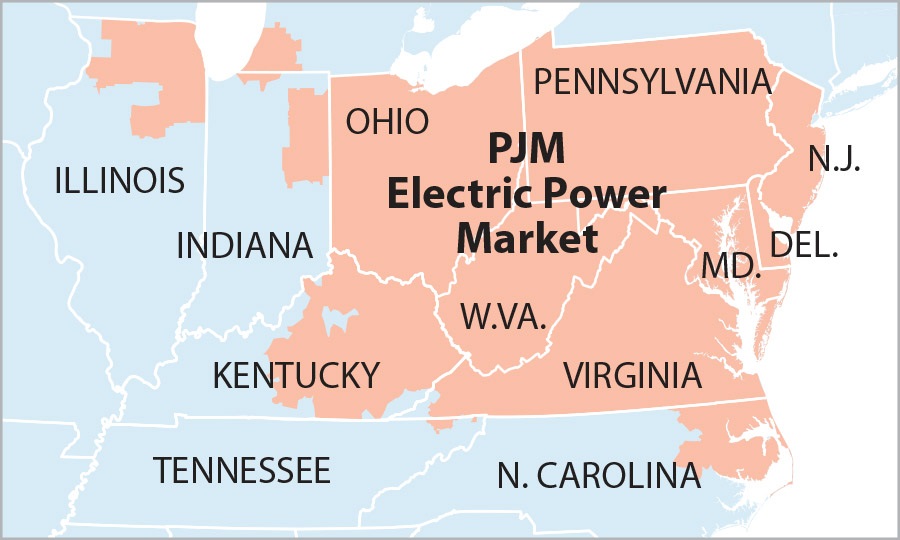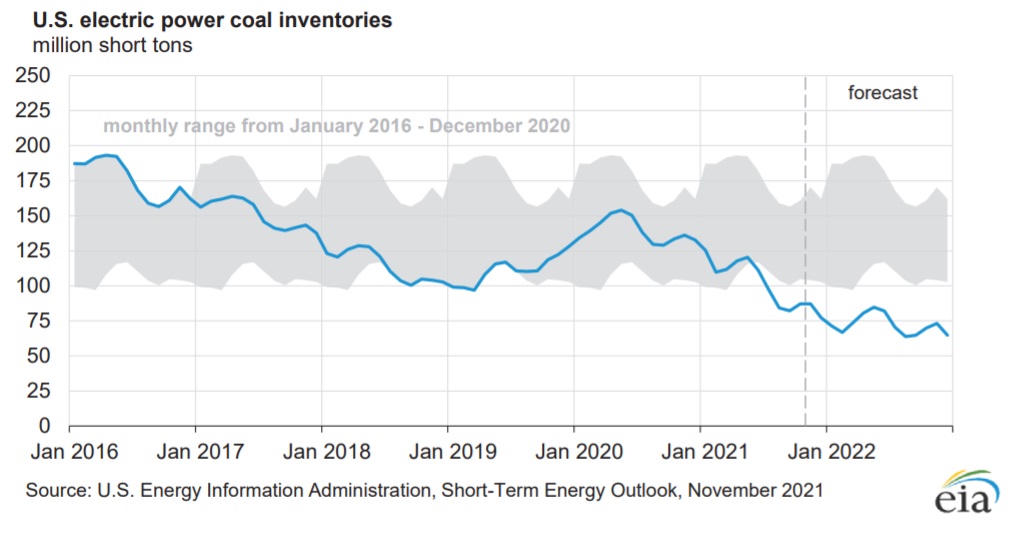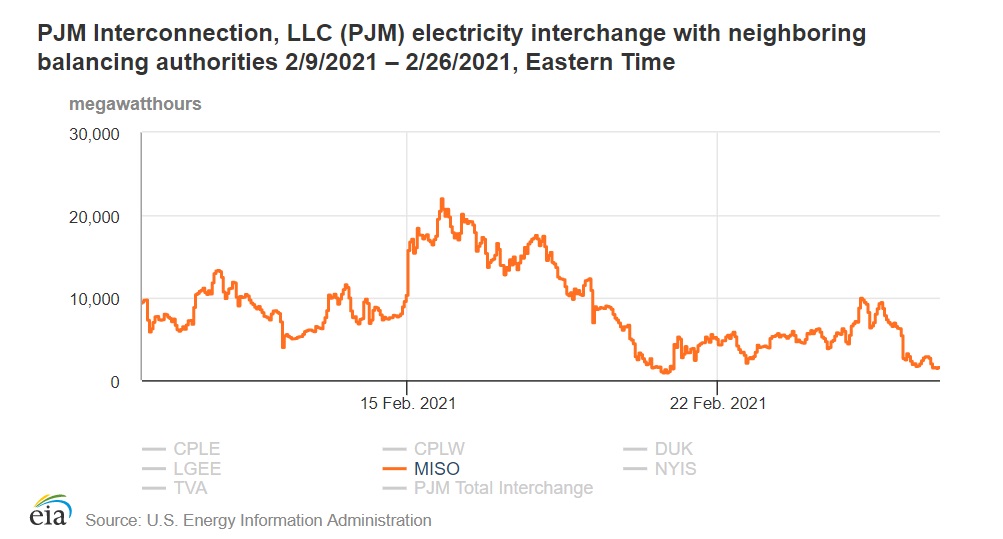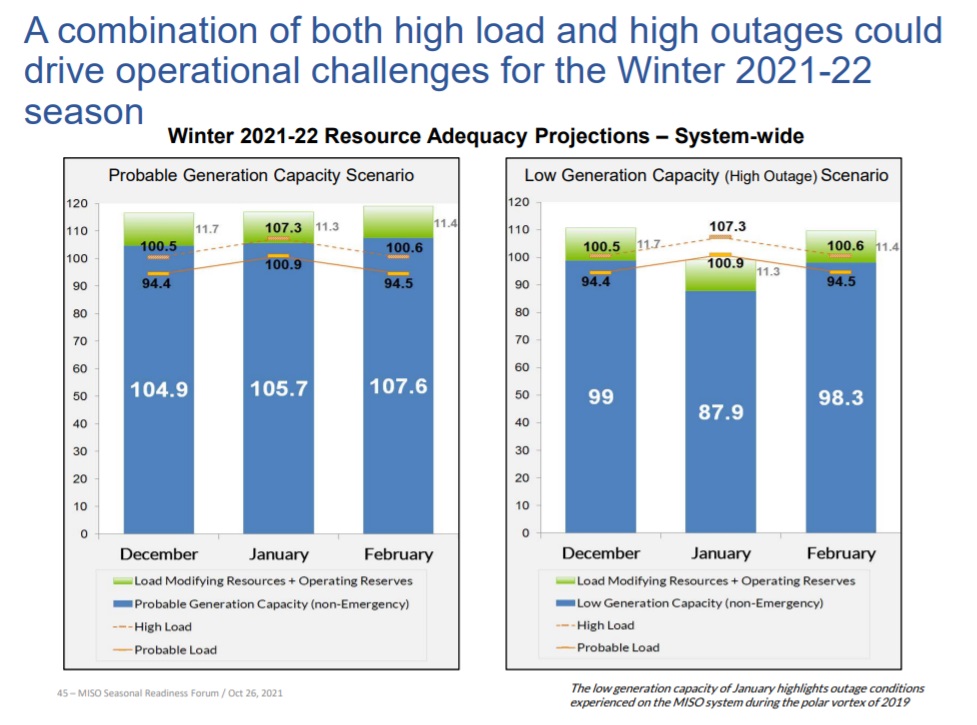National coal shortages increase the risk of blackouts this winter
The largest electric grid operator in the United States is scrambling to ensure it has enough coal for the winter in an attempt to prevent a repeat of the devastating blackouts that hit Texas in February of 2021.
The grid operator is called PJM, and it oversees the grid in 13 Eastern states, which you can see on the map below. Unfortunately, coal shortages in PJM could increase the odds of winter blackouts in Minnesota.

According to the Philadelphia Inquirer, coal stockpiles at power plants are getting so low that PJM has issued new rules to help prevent coal-fired power plants from running out of fuel in the winter. These rules changed the way PJM’s electricity markets work by allowing coal generators to reduce operations to build their coal supplies back up for when they are needed most.
The rules were prompted by extreme coal shortages at power plants. Some operators have fewer than ten days’ worth of coal on-site. Data from the U.S. Energy Information Administration (EIA) show October coal stockpiles were only at 86 million tons, which is down 35 percent from last winter. Current coal stocks are 18 percent lower than the previous five-year average.

Coal supplies are low because coal use has jumped in response to rising natural gas prices. Furthermore, coal-fired power plants have struggled to replenish their supplies due to years of declining outputs from coal mines and the supply chain struggles that are affecting all industries.
PJM’s coal supply shortages are bad news for the reliability of the electric grid because coal-fired power plants were crucial to keeping the lights on during the 2021 Polar Vortex. EIA data show coal generation increased as temperatures plunged. At some points, coal provided more power to PJMs electric grid than any other source.

Fuel supply shortages in PJM have serious national implications.
Minnesota belongs to a regional power grid called the Midcontinent Independent Systems Operator, or MISO. MISO imported a lot of electricity from PJM during the Polar Vortex of 2021, with imports peaking at nearly 22,000MW. These imports were crucial to keeping the lights on here at home while the regional electric grid to the west, the Southwest Power Pool, was initiating blackouts.

What happens if those imports are not available this year? Let’s hope we don’t have to find out.
In October of this year, MISO held a winter readiness conference to talk about the state of the electric grid. According to MISO, there could be capacity shortfalls this January, leaving the RTO dependent on “non-firm imports,” or blackouts.

If PJM, which saved MISO’s bacon last winter, doesn’t have any spare capacity of enough fuel to run their power plants, then there is a potential for rolling blackouts throughout the Midwest this winter.
For too long, politicians and the public have romanticized the idea of a grid powered by wind and solar power at the expense of reliable power plants like coal, nuclear and natural gas.
Things will only get better once the general public, and our policymakers, get their energy priorities in order. This means we need an energy policy that prioritizes reliable energy first, affordability second, and whether an energy source is carbon-free must be the third consideration. Legalizing new nuclear power would achieve all three objectives.